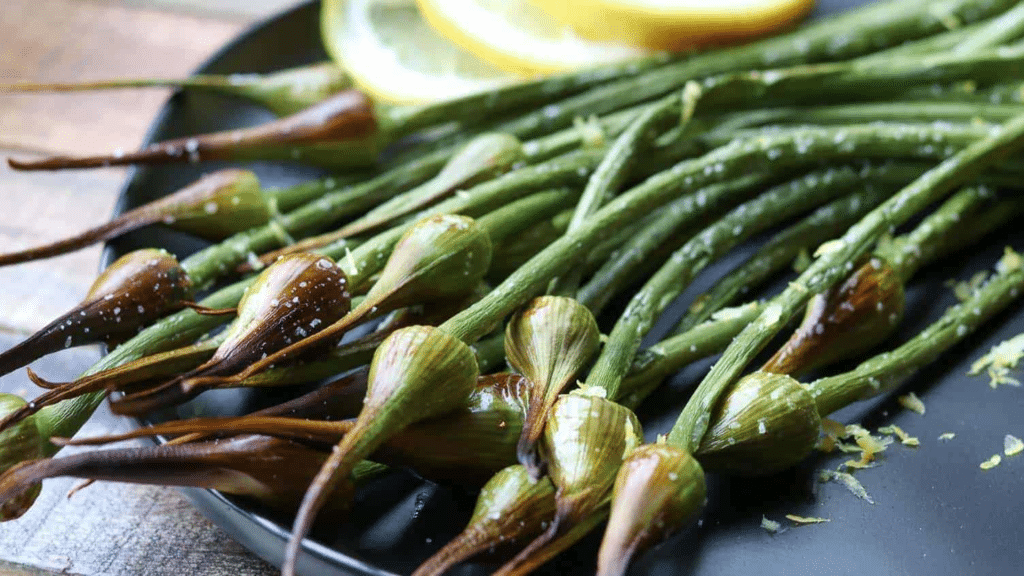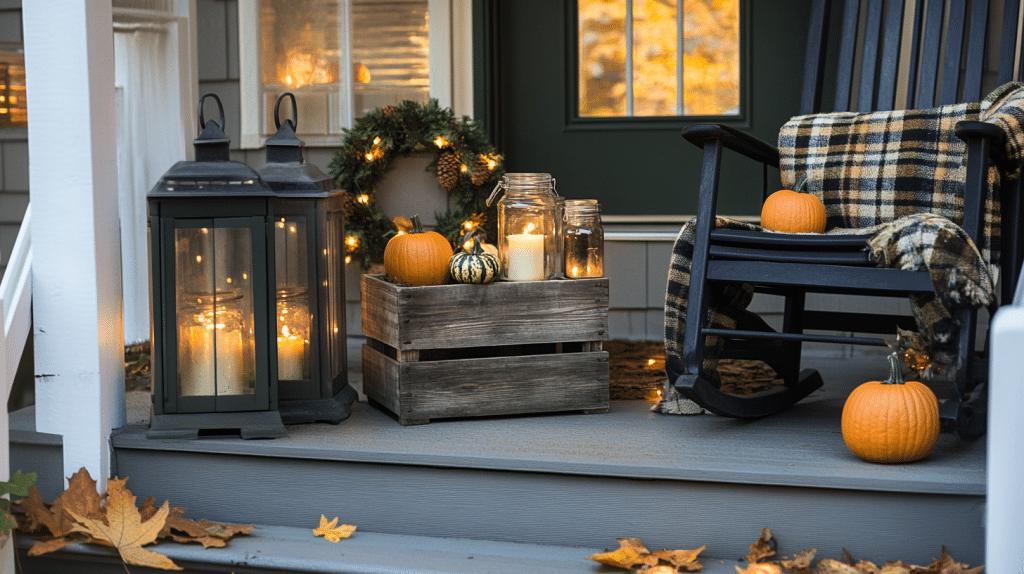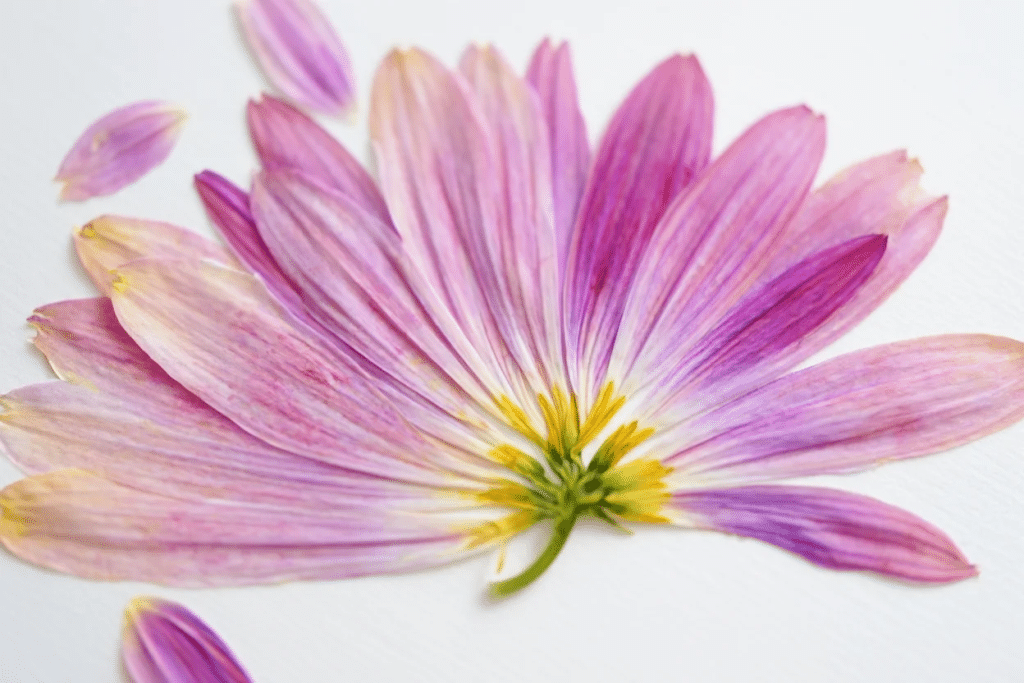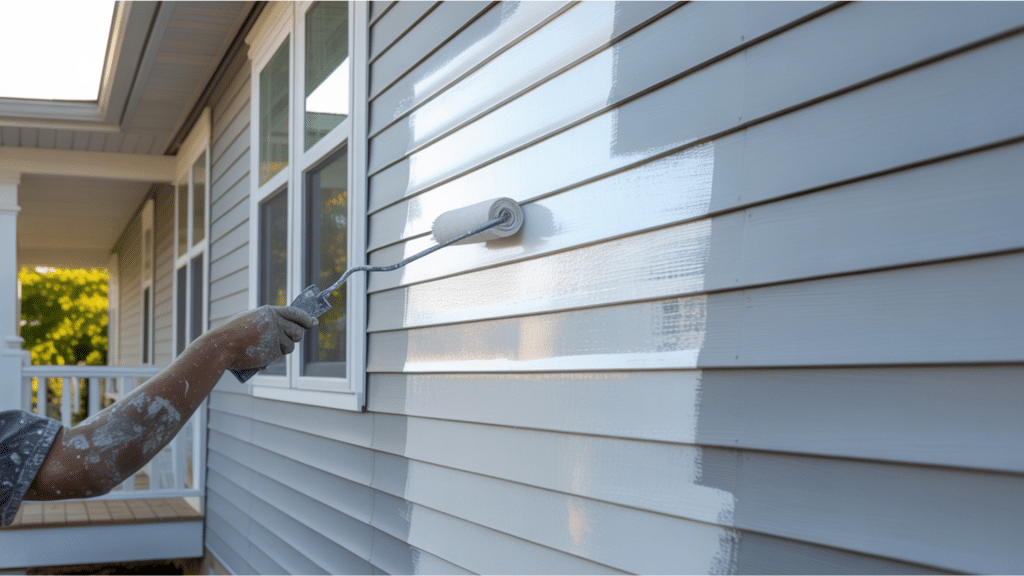I used to let my garlic scapes grow wild until I realized what I was missing. Those curly green shoots were sapping the energy and flavor development of my garlic bulbs underground.
I’ll show you exactly when to cut garlic scapes for maximum taste and how this simple timing trick improves your entire garlic harvest.
This blog covers identifying the right stage for cutting, proper harvesting techniques, and ways to use those delicious scapes in your kitchen.
You’ll learn timing secrets that make your garlic bulbs larger and more flavorful.
Understanding the Lifecycle of Garlic Scapes
Garlic scapes follow a predictable growth pattern that helps determine the best harvest timing. They first appear as straight green shoots emerging from the center of hardneck garlic plants in late spring.
Over the next few weeks, these shoots grow taller and begin forming their characteristic curl or loop shape.
The scape continues developing until it forms a complete spiral, then starts straightening again as it prepares to produce bulbils at the tip. If left unharvested, these tiny bulbs eventually mature into small garlic cloves.
The entire scape lifecycle takes about 4-6 weeks from emergence to full maturity, with the optimal cutting window occurring when the first curl forms completely.
Why Timing Matters for Flavor, Texture, and Bulb Size
Getting the timing right when to cut garlic scapes affects everything from taste to the final size of your garlic bulbs. I’ve learned that a few days can make a huge difference.
Peak Flavor Development in Scapes
Garlic scapes taste best when young and tender before the bulbil swells. At this stage, they have a mild garlic flavor with a fresh, green taste. Wait too long, and they become harsh and overly pungent.
Texture Changes with Maturity
Young scapes are tender and crisp, perfect for cooking. As they age, stems become woody and fibrous. Fresh scapes snap cleanly, while older ones feel stringy and tough.
Bulb Size Improvement Through Timing
Cutting scapes at the right time produces 20-30% larger garlic bulbs underground. The plant redirects energy from scape production into bulb development instead. Late cutting still helps, but benefits decrease as scapes mature.
The Ideal Window for When to Cut Garlic Scapes
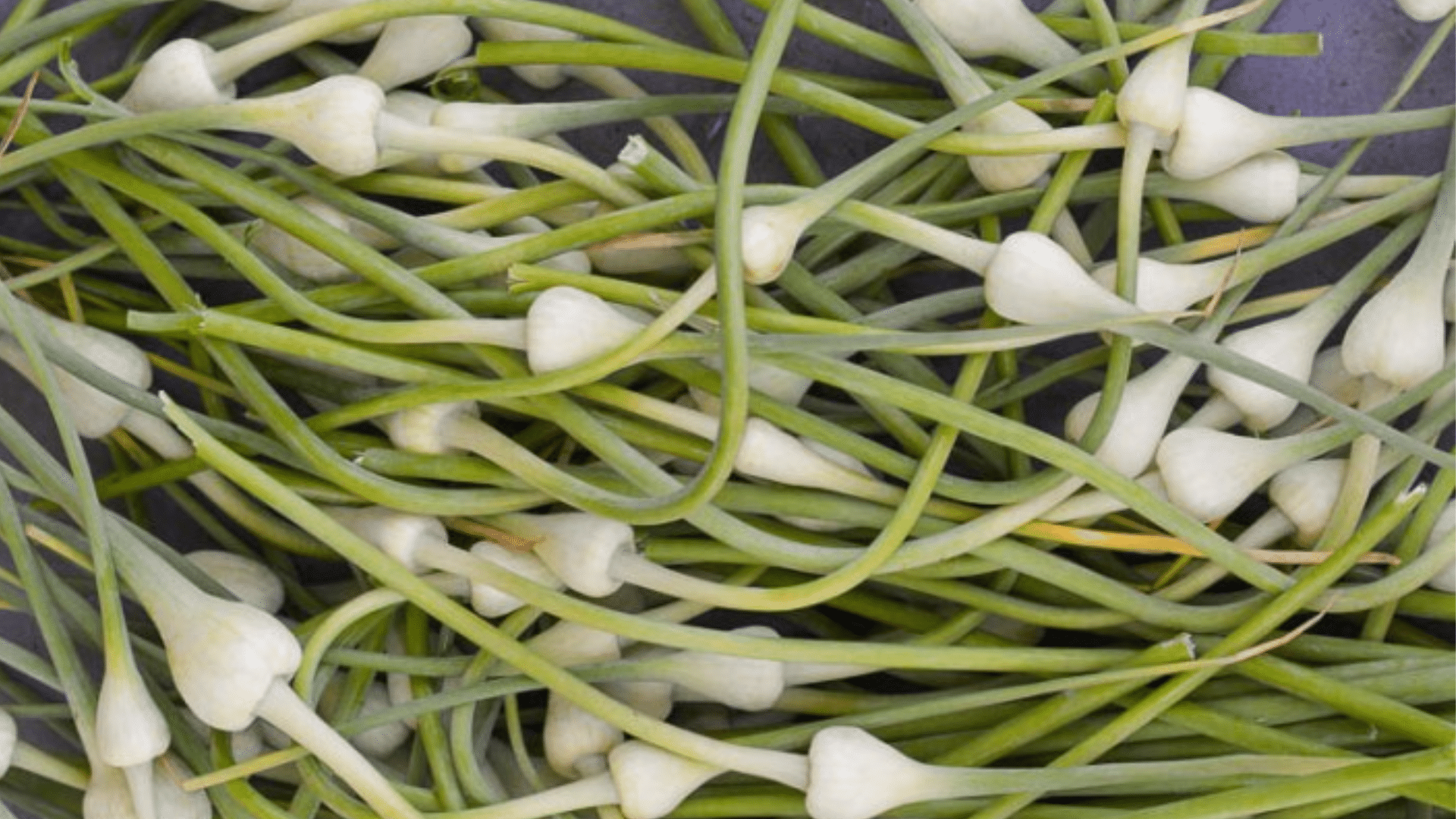
Timing garlic scape harvest perfectly takes practice, but I’ve learned to spot the exact moment when to cut garlic scapes. Missing this window means sacrificing either scape quality or bulb development.
The One-Curl Rule
I cut my garlic scapes when they’ve made exactly one complete curl or loop. Depending on my local climate, this usually happens in late May or early June.
At this stage, the scape is still tender but has developed enough to provide good flavor. The curl should resemble a loose spiral, neither tight nor forming a second loop yet.
Bulbil Size Indicator
The small bulbil at the tip of the scapes tells me a lot about timing. I look for bulbs that are still small and tight, about the size of a marble or smaller.
Once they start swelling noticeably or showing individual cloves, I’ve waited too long. The bulbil should feel firm but not hard when I gently squeeze it between my fingers.
Plant Energy Assessment
I can see when the plant starts putting serious energy into scape development. The scape grows rapidly, and the curl becomes more pronounced each day.
This is my signal to act quickly. If I wait until the scape straightens out again and starts forming seed heads, too much plant energy has been diverted from bulb development underground.
Weather-Related Timing
Hot weather accelerates scape development, while cool, wet conditions slow it down. I check when to cut garlic scapes every few days once scapes appear because timing can change quickly with temperature swings.
In my experience, a sudden heat wave can cause scapes to go from perfect to overripe in just 2-3 days.
Variety Differences
Different garlic varieties produce scapes at slightly different times, even when planted together in the exact location. My Purple Stripe varieties usually scape first, followed by Rocambole types.
I harvest each variety based on its individual development rather than following a strict calendar date. This variety-specific approach gives me the best results across my entire garlic patch.
Morning Harvest Benefits
I always cut scapes in the morning when plants are fully hydrated and crisp. Early morning scapes are more tender and have better flavor than those cut during hot afternoon hours.
The cooler temperature also means less stress on both the plant and the harvested scapes, resulting in improved storage quality and a longer shelf life.
The Right Way to Remove Scapes
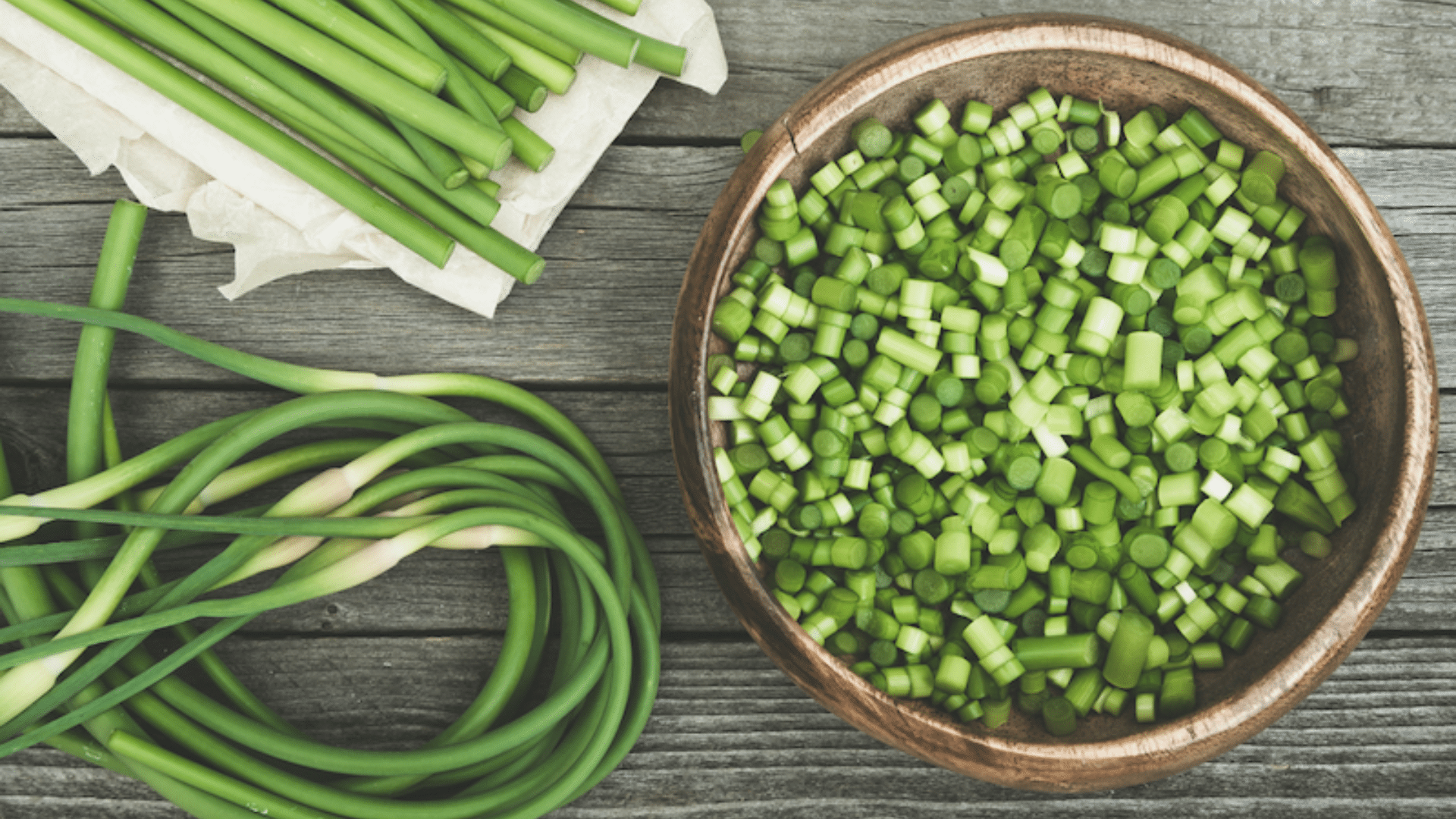
I’ve learned that proper scape removal technique is just as important as timing. The way I cut scapes affects both the plant’s health and the quality of my final garlic bulbs.
- Use clean, sharp tools: I always use sanitized garden shears or a sharp knife to make clean cuts without crushing plant tissue.
- Cut 4-6 inches above the leaves: I locate the cutting point well above the top leaves but below the curl to maximize usable scape length.
- Choose dry conditions: I avoid cutting when plants are wet from dew or rain to reduce disease spread and promote faster healing.
- Remove the entire scape: To get the maximum benefit, I harvest the full length of the tender stem, not just the curly top portion.
- Allow healing time: I avoid watering directly on cut stems for 1-2 days to allow the wounds to callus over properly.
Tips to Maximize Yield
Getting the most from my garlic scape harvest requires planning that starts long before the scapes even appear. I’ve developed strategies that help me produce more scapes and get better quality from each plant.
Plant Hardneck Varieties Only
I focus on hard-neck garlic varieties since soft-neck varieties don’t produce scapes. My favorites include Purple Stripe, Rocambole, and Porcelain varieties, which offer different flavors and timing options.
Feed Plants Well
I apply compost at planting and side-dress with nitrogen in early spring. Well-fed plants produce thicker, more flavorful scapes without over-fertilizing late in the season.
Maintain Proper Spacing
I space cloves 4-6 inches apart to reduce competition. Crowded plants produce smaller, weaker scapes that aren’t worth harvesting.
Stagger Harvest Timing
I cut scapes over several days rather than all at once. This extends my fresh scape season and ensures peak quality from each plant.
Watch for Second Flushes
Sometimes, smaller secondary scapes appear after the main harvest has been completed. These bonus scapes are often more tender and add to my total yield.
Monitor Weather Closely
Hot weather accelerates scape development, while cool conditions slow it down. Based on current temperature patterns, I adjust my checking schedule.
Conclusion
Mastering when to cut garlic scapes has completely changed how I approach garlic growing. Those curly green shoots are no longer mysterious garden weeds; they’re valuable ingredients that improve both my cooking and my harvest.
The one-curl rule keeps things simple: cut when scapes make their first complete loop for tender texture and mild flavor. Your garlic bulbs will thank you with increased size and better storage life.
Fresh scapes in your kitchen today mean bigger, more flavorful garlic bulbs waiting underground for later. Start watching those scenes closely – perfect timing makes all the difference.


